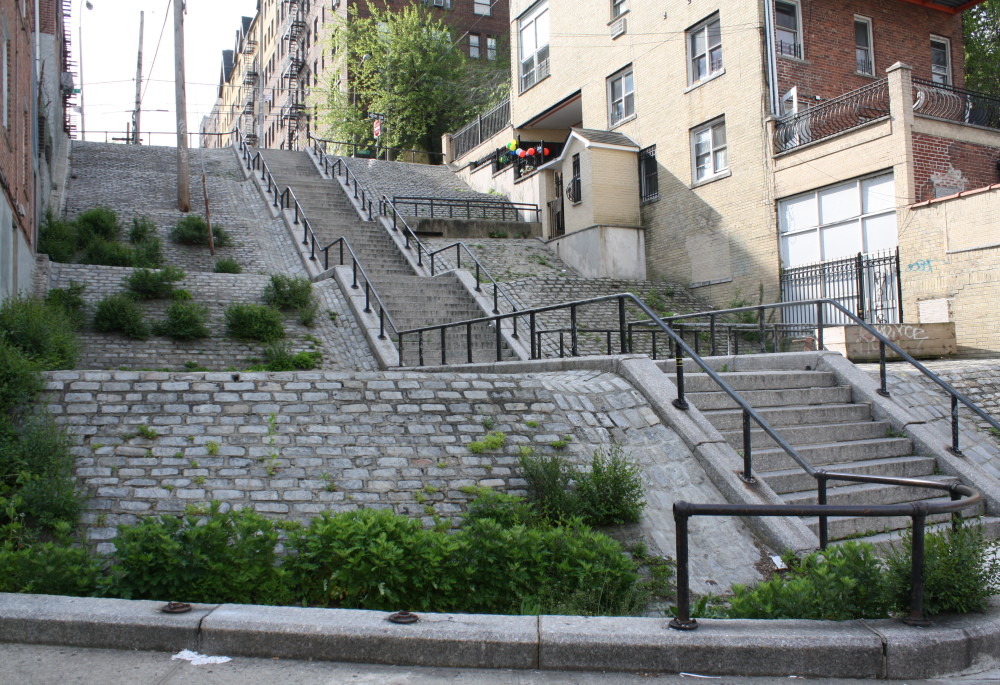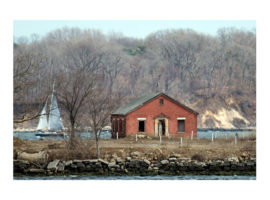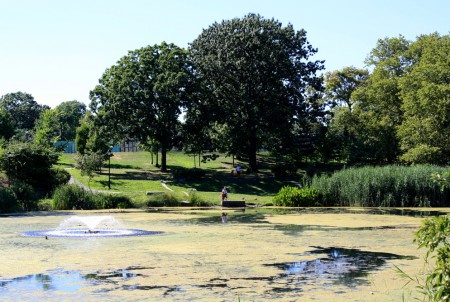Van Cortlandt Village, The Bronx
Located in Kingsbridge, Van Cortlandt Village is characterized by its hilly terrain, winding street plan and its distinctive early-20th-century housing stock, which includes freestanding houses, row houses and large apartment complexes. Most of the neighborhood’s modest two- and three-story, one- and two-family houses were designed in the neo-Tudor, neo-Georgian and neo-Federal styles, with some buildings accented by Mediterranean tiled roofs and intricate brick and stonework.
Kingsbridge was a significant location in the defense of New York City during the American Revolution due to the presence of Fort Independence, one of a series of major fortifications constructed to control passage between New York City and the mainland. In today’s configuration, the fort stood roughly between Giles Place and Cannon Place to the south of West 238th Street. Possible remnants of the fort are extant along Cannon Place. Upon the discovery in 1915 of cannons buried in the ground east of the fort site, a small park was constructed nearby called Fort Independence Park.
Van Cortlandt Village is fortunate to have retained its Frederick Law Olmsted–designed street plan, of which very little survives throughout the rest of The Bronx. Despite the fact that New York City was not fully consolidated until 1898, the city expanded into the west Bronx in the 1870s and continued the Manhattan street grid, even as Brooklyn, Queens and Staten Island had developed their own independent street systems. As a reaction to this imposition, the Bronx Park Board’s president, William R. Martin, insisted that The Bronx have a system of streets that would correspond better to its hilly terrain. Olmsted was hired in 1875, and he drew plans on a neighborhood scale consisting of business districts, suburbs, compact housing, parks, parkways and transit routes. While construction was underway, political management of the Parks Board changed and Olmsted was discharged in 1878. As a result, Olmsted’s layout only survives in a few neighborhoods in The Bronx, including Van Cortlandt Village.
With the opening of the subway station at Broadway and 238th Street in 1908, development pushed northward into the upper reaches of The Bronx. A great surge of development occurred in Van Cortlandt Village during the first three decades of the 20th century with the construction of great apartment houses and small private homes throughout the neighborhood. The new residents of the area were of modest income and were mostly Irish immigrants. With the construction of the Shalom Aleichem Houses in 1926–1927, Eastern European Jews began to move in, having relocated from the Lower East Side.
The rich mix of early-20th-century architecture and the retention of the Olmsted street plan give Van Cortlandt Village its distinctive character. In recent years the neighborhood has struggled with major development projects encroaching on the historic built environment. In 2011, the neighborhood was deemed eligible for listing on the State and National Registers of Historic Places. At the time of this publication, an official nomination is in the works.










